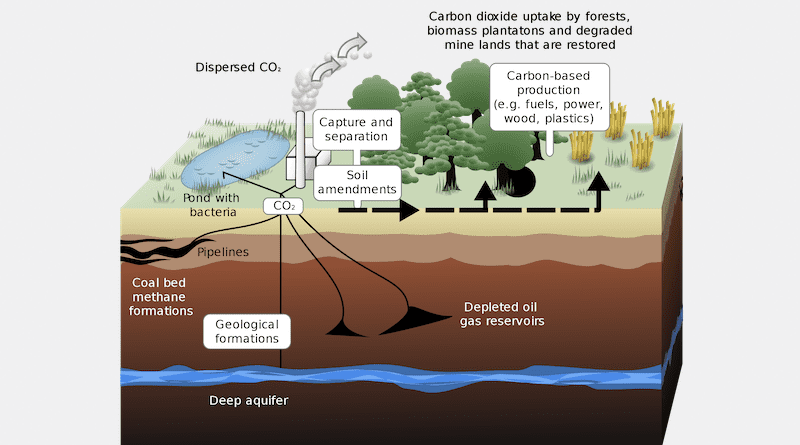Storing CO2 Underground May Be A Safe Solution To Mitigate Climate Change
A study led by the Institute of Environmental Assessment and Water Research (IDAEA) and the Mediterranean Institute for Advanced Studies (IMEDEA CSIC-UIB), both belonging to the Spanish National Research Council (CSIC), has shown that injecting billions of tonnes of atmospheric CO2 (carbon dioxide) underground has a low risk of leakage back to the surface. According to the simulations, the CO2 would remain deep in the subsurface for millions of years, even if the overlying low-permeability rocks were fractured. These results indicate that this technology, called geological CO2 storage, can be safely undertaken to mitigate climate change.
The study, published in the journal Geophysical Research Letters, has been carried out in collaboration with the Lawrence Berkeley National Laboratory and the University of Illinois at Urbana-Champaign. This interdisciplinary research has developed a novel methodology to calculate the probability of CO2 leakage considering billion tons of CO2 injected underground over a time scale of millions of years, much larger than what had been investigated until now.
“The objective of CO2 storage is to take this greenhouse gas from the hard-to-abate industry and inject it deep underground. For the gas to remain at depth, it must be injected into rocks with high permeability and porosity, such as sandstones. However, there is a risk of CO2leakage, as CO2 is less dense than the saline water that fills the pores at great depth, so it can float upwards and leak back to the surface”, explains the IDAEA-CSIC researcher Iman Rahimzadeh Kivi and first author of the study.
To calculate the risk of CO2 leakage, researchers predicted the gas flow to the surface after its injection at 1.550 m deep (the common depth to store the gas underground) using numerical transport models in two different scenarios.
“Our predictions show that, in the best-case scenario, when the underground rock properties remain intact, the CO2 would only rise 200 m upwards after one million years. In our worst-case scenario, when the rocks present a large number of fractures, CO2 would rise 300 m upwards”, indicates Victor Vilarrasa, researcher at IMEDEA-CSIC-UIB and principal author of the study. “This means that even in the worst possible scenario, the CO2 would be indefinitely contained in the subsurface at 1250 m depth for millions of years”, highlights Rahimzadeh Kivi.
The authors highlight this study is relevant to increase confidence in the security of underground CO2 storage to achieve carbon neutrality and mitigate the effects of the climate emergency. “The scenarios proposed by the Intergovernmental Panel on Climate Change (IPCC) to achieve zero emissions, and even net-carbon removal from the atmosphere, require geological CO2 storage. And this study shows that permanent CO2 storage can be safely achieved” concludes Vilarrasa.

